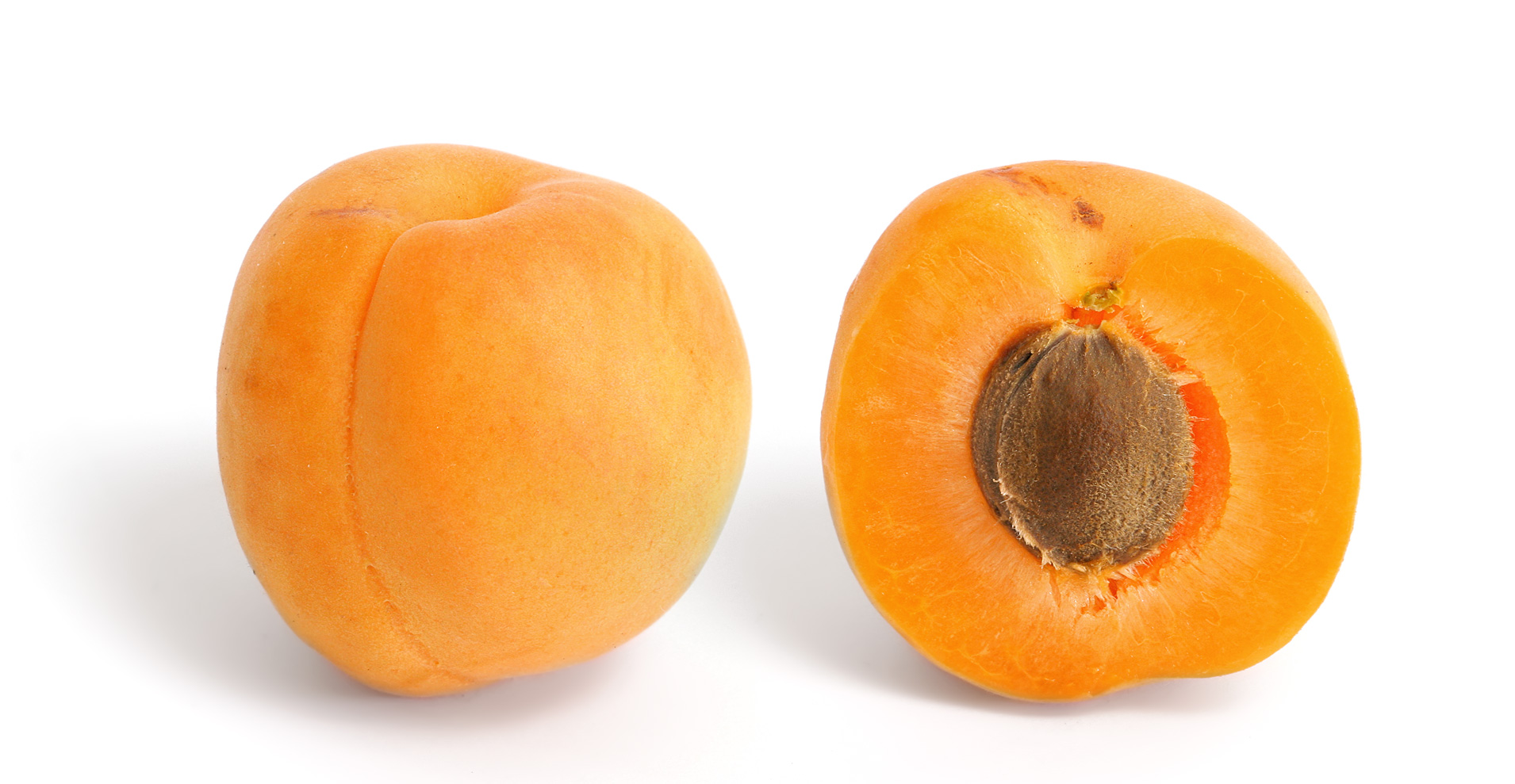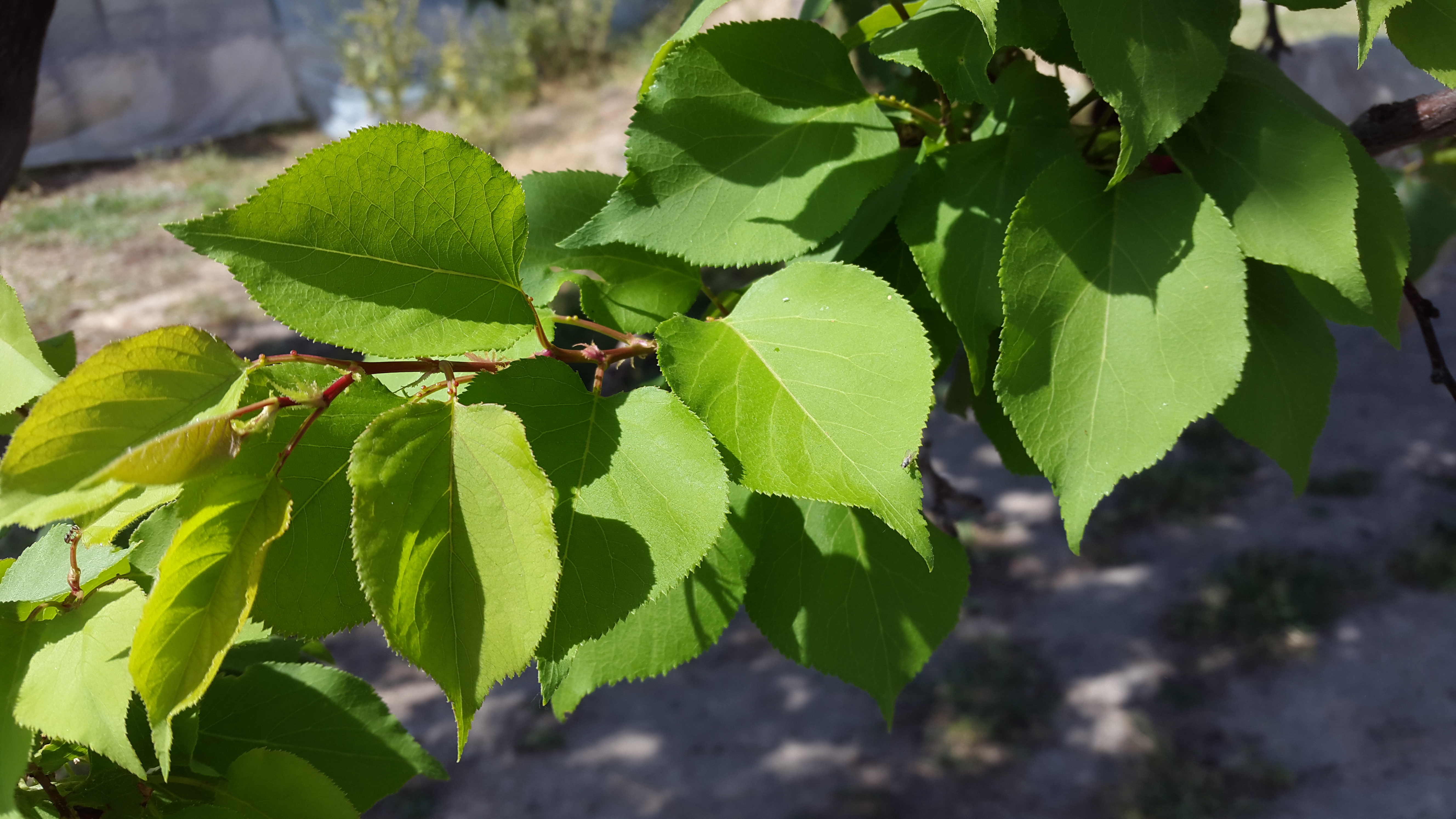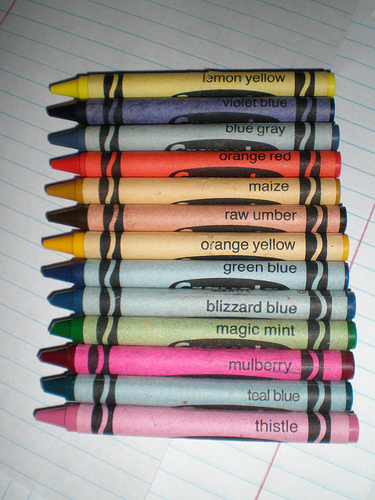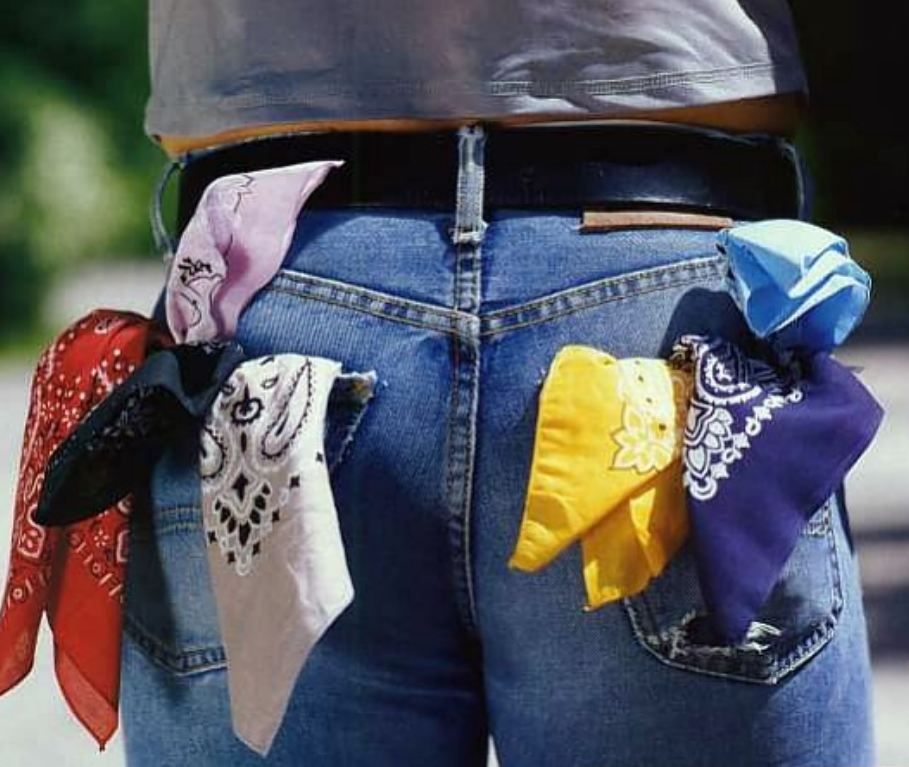|
Apricot (color)
Apricot is a light yellowish- orangish color that is similar to the color of apricots. However, it is paler than actual apricots. Etymology The etymology of the color apricot (and the fruit): the word comes from the Arabic ''Al-birquq'' (itself from Greek ''berikokon'', ultimately from Latin ''praecoquum''). ''Apricot'' has been in use as a color name since 1851. Variations of apricot Light apricot Displayed at right is the light tone of apricot called ''apricot'' since 1958 in Crayola crayons. Mellow apricot Displayed at right is the color ''mellow apricot''. This is one of the colors on the British Standards 5252 color list. This color is #06E50 on the 5252 color list. The 5252 color list is for colors used in color coordination and in building construction. The British Standard color lists were first formulated in 1930 and reached their present form in 1955. Apricot in human culture ;Sexuality * In the bandana code of the gay leather subculture, wearing an apricot ... [...More Info...] [...Related Items...] OR: [Wikipedia] [Google] [Baidu] |
Yellow
Yellow is the color between green and orange on the spectrum of light. It is evoked by light with a dominant wavelength of roughly 575585 nm. It is a primary color in subtractive color systems, used in painting or color printing. In the RGB color model, used to create colors on television and computer screens, yellow is a secondary color made by combining red and green at equal intensity. Carotenoids give the characteristic yellow color to autumn leaves, corn, canaries, daffodils, and lemons, as well as egg yolks, buttercups, and bananas. They absorb light energy and protect plants from photo damage in some cases. Sunlight has a slight yellowish hue when the Sun is near the horizon, due to atmospheric scattering of shorter wavelengths (green, blue, and violet). Because it was widely available, yellow ochre pigment was one of the first colors used in art; the Lascaux cave in France has a painting of a yellow horse 17,000 years old. Ochre and orpiment pigments ... [...More Info...] [...Related Items...] OR: [Wikipedia] [Google] [Baidu] |
Orange (colour)
Orange is the colour between yellow and red on the spectrum of visible light. Human eyes perceive orange when observing light with a dominant wavelength between roughly 585 and 620 nanometres. In traditional colour theory, it is a secondary colour of pigments, produced by mixing yellow and red. In the RGB colour model, it is a tertiary colour. It is named after the fruit of the same name. The orange colour of many fruits and vegetables, such as carrots, pumpkins, sweet potatoes, and oranges, comes from carotenes, a type of photosynthetic pigment. These pigments convert the light energy that the plants absorb from the Sun into chemical energy for the plants' growth. Similarly, the hues of autumn leaves are from the same pigment after chlorophyll is removed. In Europe and America, surveys show that orange is the colour most associated with amusement, the unconventional, extroversion, warmth, fire, energy, activity, danger, taste and aroma, the autumn and Allh ... [...More Info...] [...Related Items...] OR: [Wikipedia] [Google] [Baidu] |
Apricot
An apricot (, ) is a fruit, or the tree that bears the fruit, of several species in the genus '' Prunus''. Usually, an apricot is from the species '' P. armeniaca'', but the fruits of the other species in ''Prunus'' sect. ''Armeniaca'' are also called apricots. Etymology ''Apricot'' first appeared in English in the 16th century as ''abrecock'' from the Middle French ''aubercot'' or later ''abricot'', from Spanish '' albaricoque'' and Catalan ''a(l)bercoc'', in turn from Arabic الْبَرْقُوق (al-barqūq, "the plums"), from Byzantine Greek βερικοκκίᾱ (berikokkíā, "apricot tree"), derived from late Greek ''πραικόκιον'' (''praikókion'', "apricot") from Latin '' ersica ("peach")praecocia'' (''praecoquus'', "early ripening"). Species Apricots are species belonging to ''Prunus'' sect. ''Armeniaca''. The taxonomic position of '' P. brigantina'' is disputed. It is grouped with plum species according to chloroplast DNA sequences, but more closel ... [...More Info...] [...Related Items...] OR: [Wikipedia] [Google] [Baidu] |
Apricot And Cross Section
An apricot (, ) is a fruit, or the tree that bears the fruit, of several species in the genus ''Prunus''. Usually, an apricot is from the species '' P. armeniaca'', but the fruits of the other species in ''Prunus'' sect. ''Armeniaca'' are also called apricots. Etymology ''Apricot'' first appeared in English in the 16th century as ''abrecock'' from the Middle French ''aubercot'' or later ''abricot'', from Spanish '' albaricoque'' and Catalan ''a(l)bercoc'', in turn from Arabic الْبَرْقُوق (al-barqūq, "the plums"), from Byzantine Greek βερικοκκίᾱ (berikokkíā, "apricot tree"), derived from late Greek ''πραικόκιον'' (''praikókion'', "apricot") from Latin '' ersica ("peach")praecocia'' (''praecoquus'', "early ripening"). Species Apricots are species belonging to ''Prunus'' sect. ''Armeniaca''. The taxonomic position of '' P. brigantina'' is disputed. It is grouped with plum species according to chloroplast DNA sequences, but more closely re ... [...More Info...] [...Related Items...] OR: [Wikipedia] [Google] [Baidu] |
Arabic Language
Arabic (, ' ; , ' or ) is a Semitic language spoken primarily across the Arab world.Semitic languages: an international handbook / edited by Stefan Weninger; in collaboration with Geoffrey Khan, Michael P. Streck, Janet C. E.Watson; Walter de Gruyter GmbH & Co. KG, Berlin/Boston, 2011. Having emerged in the 1st century, it is named after the Arab people; the term "Arab" was initially used to describe those living in the Arabian Peninsula, as perceived by geographers from ancient Greece. Since the 7th century, Arabic has been characterized by diglossia, with an opposition between a standard prestige language—i.e., Literary Arabic: Modern Standard Arabic (MSA) or Classical Arabic—and diverse vernacular varieties, which serve as mother tongues. Colloquial dialects vary significantly from MSA, impeding mutual intelligibility. MSA is only acquired through formal education and is not spoken natively. It is the language of literature, official documents, and formal wr ... [...More Info...] [...Related Items...] OR: [Wikipedia] [Google] [Baidu] |
List Of Crayola Crayon Colors
Since the introduction of Crayola drawing crayons by Binney & Smith in 1903, more than 200 distinctive colors have been produced in a wide variety of assortments. The table below represents all of the colors found in regular Crayola assortments from 1903 to the present. Since the introduction of fluorescent crayons in the 1970s, the standard colors have been complemented by a number of specialty crayon assortments, represented in subsequent tables. Standard colors Specialty crayons Along with the regular packs of crayons, there have been many specialty sets, including Silver Swirls,; re-accessed April 19, 2008 Gem Tones,; re-accessed April 19, 2008 Pearl Brite Crayons,; re-accessed April 19, 2008 Metallic FX Crayons, Magic Scent Crayons,; re-accessed April 19, 2008 Silly Scents, and more. Fluorescent crayons In 1972, Binney & Smith introduced eight Crayola fluorescent crayons, designed to fluoresce under black light. The following year, they were added to the 72-count box ... [...More Info...] [...Related Items...] OR: [Wikipedia] [Google] [Baidu] |
Crayola
Crayola LLC, formerly the Binney & Smith Company, is an American manufacturing company specializing in art supplies. It is known for its brand ''Crayola'' and best known for its crayons. The company is headquartered in Forks Township, Pennsylvania in the Lehigh Valley region of the state. Since 1984, Crayola has been a wholly owned subsidiary of Hallmark Cards. Originally an industrial pigment supply company, Crayola soon shifted its focus to art products for home and school use, beginning with chalk, then crayons, followed later by colored pencils, markers, paints, modeling clay, and other related goods. All Crayola-branded products are marketed as nontoxic and safe for use by children. Most Crayola crayons are manufactured in the United States. Crayola also produces Silly Putty and a line of professional art products under the 'Portfolio Series brand', including acrylics, watercolor, tempera, and brushes. Crayola, LLC claims the Crayola brand has 99% name recognition in ... [...More Info...] [...Related Items...] OR: [Wikipedia] [Google] [Baidu] |
British Standards
British Standards (BS) are the standards produced by the BSI Group which is incorporated under a royal charter and which is formally designated as the national standards body (NSB) for the UK. The BSI Group produces British Standards under the authority of the charter, which lays down as one of the BSI's objectives to: Formally, as stated in a 2002 memorandum of understanding between the BSI and the United Kingdom Government, British Standards are defined as: Products and services which BSI certifies as having met the requirements of specific standards within designated schemes are awarded the Kitemark. History BSI Group began in 1901 as the ''Engineering Standards Committee'', led by James Mansergh, to standardize the number and type of steel sections, in order to make British manufacturers more efficient and competitive. Over time the standards developed to cover many aspects of tangible engineering, and then engineering methodologies including quality systems, safety ... [...More Info...] [...Related Items...] OR: [Wikipedia] [Google] [Baidu] |
Bandana Code
The handkerchief code (also known as the hanky code, the bandana code, and flagging) is a system of color-coded cloth handkerchief or bandanas for non-verbally communicating one's interests in sexual activities and fetishes. The color of the handkerchief identifies a particular activity, and the pocket it is worn in (left or right) identifies the wearer's preferred role in that activity. Wearing a handkerchief on the left side of the body typically indicates one is a "top" (considered ''active'' in the act/fetish indicated by the color of the handkerchief), while wearing it on the right side of the body would indicate one is a "bottom" (considered ''passive'' in it). For example, a dark blue handkerchief indicates an interest in anal sex, and wearing it in the left pocket indicates a preference for being the insertive partner. The code was most widely used in the 1970s in the United States, Canada, Australia, and Europe, by gay and bisexual men seeking casual sex, or BDSM practit ... [...More Info...] [...Related Items...] OR: [Wikipedia] [Google] [Baidu] |
Leather Subculture
Leather subculture denotes practices and styles of dress organized around sexual activities that involve leather garments, such as leather jackets, vests, boots, chaps, harnesses, or other items. Wearing leather garments is one way that participants in this culture self-consciously distinguish themselves from mainstream sexual cultures. Many participants associate leather culture with BDSM (Bondage/Discipline, Dominance/Submission, Sado/Masochism, also called "SM" or "S&M") practices and its many subcultures. For some, black leather clothing is an erotic fashion that expresses heightened masculinity or the appropriation of sexual power; love of motorcycles, motorcycle clubs and independence; and/or engagement in sexual kink or leather fetishism."Elegy for the Valley of Kings," by Gayle Rubin, in ''In Changing Times: Gay Men and Lesbians Encounter HIV/AIDS,'' ed. Levine et al., University of Chicago Press History Male leather culture has existed since the late 1940s, whe ... [...More Info...] [...Related Items...] OR: [Wikipedia] [Google] [Baidu] |
Bandana
A kerchief (from the Old French ''couvrechief'', "cover head"), also known as a bandana, bandanna, or "Wild Rag" (in cowboy culture), is a triangular or square piece of cloth tied around the head, face or neck for protective or decorative purposes. The popularity of ''head kerchiefs'' may vary by culture or religion, often being used as a Christian headcovering by women of the Anabaptist, Eastern Orthodox, and Plymouth Brethren denominations, as well as by some Orthodox Jewish and Muslim women. The ''neckerchief'' and ''handkerchief'' are related items. Types Bandana A bandana or bandanna (from Sanskrit बन्धन or bandhana, "a bond") is a type of large, usually colourful kerchief, originating from the Indian subcontinent, often worn on the head or around the neck of a person. It is considered to be a hat by some. Bandanas are frequently printed in a paisley pattern and are most often used to hold hair back, either as a fashionable head accessory, or for practical purpo ... [...More Info...] [...Related Items...] OR: [Wikipedia] [Google] [Baidu] |
Chubby Culture
A chub is an overweight or obese gay man who identifies as being part of the chubby culture. Although there is some overlap between chubs and bears, chubs have their own distinct subculture and community. There are bars, organizations and social events specifically catering to this subculture, which allows members of the community to socialize with each other and develop social networks. In the last several years, large regional social events for gay chubs have developed. They often feature pageants in which titles are given to winners, such as "Mr. Chubby International" and "Mr. Chaser International". In the United States, there is an annual national event, Convergence, as well as several annual regional gatherings. There is also an annual event in Europe called European Big Men's Convergence. These events are held in different cities each year and are usually hosted by that city's local big men's organization. Japan has also had a large but relatively silent chub community, ... [...More Info...] [...Related Items...] OR: [Wikipedia] [Google] [Baidu] |









